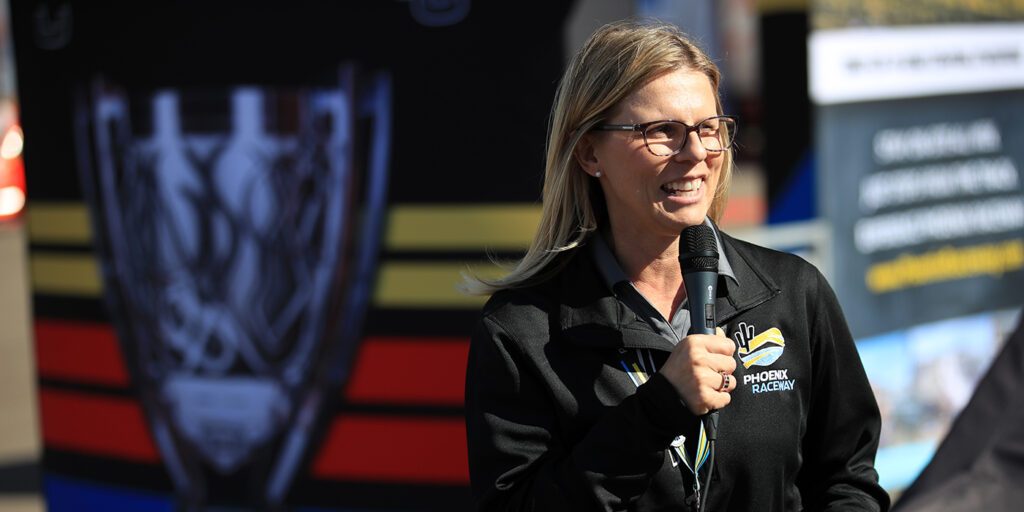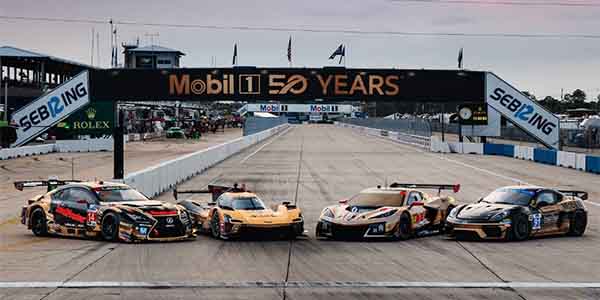When Julie Giese made the decision to find a career in racing, she sent her resume to every racetrack in the country she could find an address for. Unfortunately, she got a lot of rejection letters.
“I still have them, believe it or not, including one from Phoenix Raceway,” says Julie Giese, who today is president of Phoenix Raceway. “It didn’t matter what type of track it was. I just wanted to get my foot in the door. I don’t know why to this day I saved [the rejection letters]. Honestly, the race fan in me thought it was cool that I got a letter from a racetrack with a logo on it. I’m really glad I did though.”
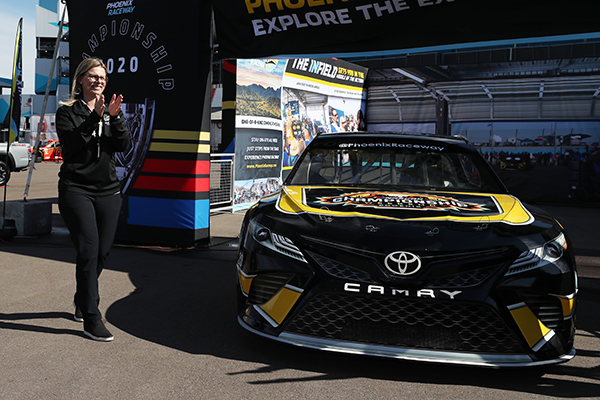
Julie’s mass resume send may not have worked, but a marketing colleague had a friend who worked for Watkins Glen International and she had heard the track was looking to hire, so she notified Julie.
“They were hiring a PR manager and he called her to see if she knew of anyone and she knew I loved racing, so she mentioned it to me and the rest is history. I moved to upstate New York in January 2001.”
Working an entry level job on the communications team was Julie’s foot in the door of the racing world, but Julie wasn’t always on the motorsports path.
“I grew up a race fan,” Giese says. “I grew up in Wisconsin where there’s lots of short tracks. I was part of a family of race fans. My dad was a big Dale Earnhardt fan turned Jeff Gordon fan, so we watched races and I really enjoyed it. It was something fun to do on Sundays.
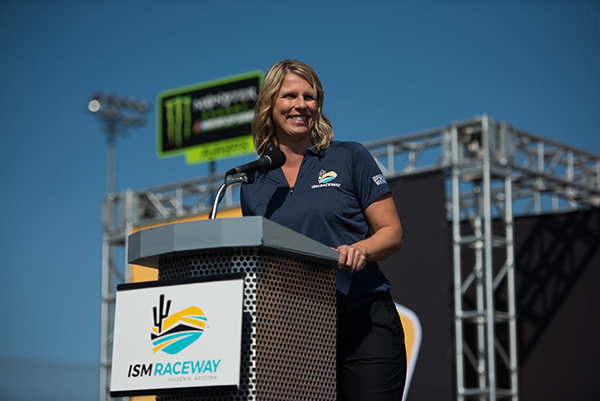
“I grew up on a dairy farm, so as I went to college, I was thinking I would join the agriculture world because that was what I knew. About halfway through my college career, I had spent a couple of summers doing internships at the University of Wisconsin Madison in animal science and genetics, and I realized that just wasn’t for me. I wanted something a little bit different.”
As you now know, that different job was at a racetrack. Julie was always a hard-working, dedicated employee and that proved to be a great way for her to advance her career.
“I took the Watkins Glen opportunity to learn as much as I could,” she says. “Watkins Glen is a very small team with a really busy schedule, so you had a huge opportunity to learn so many different types of motorsports events. It wasn’t just a NASCAR race. There was sports car racing and historic sports car racing and so many different things, so that was a huge opportunity for me to really immerse myself in the world of motorsports.”
In 2004, Julie was given the opportunity to move to Daytona International Speedway. She left the winters behind to join the communications/marketing team there and spent 12 years at Daytona.
“I joined as the director of communications overseeing consumer marketing,” she says. “When I left in 2016, I was the vice president of marketing. At that point, we had built a marketing team from scratch. We grew from a couple individuals to about 14 and oversaw everything from digital, social, advertising, branding, the event experience, as well as communications, credentials, and archives. It was a really great opportunity for me to just continue to learn.
“During that time, we underwent a $400 million reimagination of Daytona International Speedway. That gave me the opportunity to immerse myself on the construction side of our business a little bit. I worked closely with our internal design and development team. I kind of became a project manager and the liaison between all the individuals on the track and our design team.”
When Daytona opened in 2016, Phoenix Raceway’s internal design and construction team came to Julie and asked if she would join their team and play a similar role for the project that they were getting ready to kick off, which was a $178 million renovation.
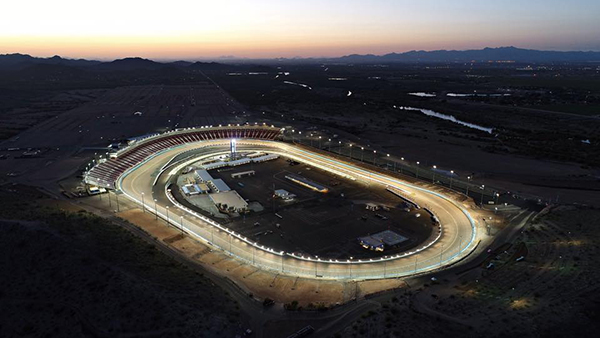
“I left the marketing team at Daytona and joined the construction team, which was a very big departure and a big learning opportunity for me,” Giese says. “I’ll say it’s probably the two years that most prepared me for my current role at Phoenix Raceway as track president.”
While Julie undoubtedly worked hard toward new opportunities to expand her roles within racing, she admits becoming a track president was not a job she had an interest in. She preferred being behind the scenes.
“When I left Daytona, if you asked me, the answer was no, I don’t want to be a track president,” Giese says. “I was content doing the behind-the-scenes work and I like to roll up my sleeves and get involved. Our HR director and I laugh about it now because her and I have had a lot of conversations about that and the answer was always a resounding no from me.
“Those two years working with the design and construction team, specifically on the Phoenix project, really helped me see how other track leaders manage their teams, lead their teams and understand that there is no one size fits all. You can really make it your own.
“Now, I am really glad I threw my hat in the ring. It was a pleasant surprise when they called and told me I was going to be named the track president. I am really glad I took it. It’s been a great learning experience. The market out here is phenomenal. We’ve got a really great team of people and there’s a lot of momentum out here at Phoenix Raceway. It’s fun and every day is different.”
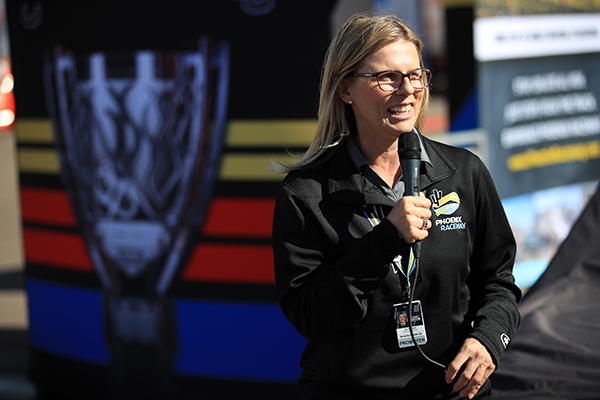
Julie’s role today consists of leading a team of talented people who are focused on making the Phoenix Raceway experience a great one for all who come to the venue – regardless of the type of event.
“Right now (July), we’re really focused on planning for NASCAR Championship weekend (August 8),” Giese says. “A big part of my role is just helping to guide the ship, but also working really closely with all of our community members – the city of Avondale, which is a tremendous partner for us, to all the other local municipalities around Phoenix Raceway, the state of Arizona – to come together in order to put on this massive event.
“We’re a small group of three dozen employees that hosts one of NASCAR’s largest events and most important events. It takes everybody in our state to really come together. My role is really connecting people, being an ambassador, being that cheerleader when you need to be, and being the task master when you have to be. Every day you’re doing something new, you’re learning something new, you’re meeting somebody new. This community that we’re in is incredibly welcoming and very excited about NASCAR Championship weekend.”
When Phoenix Raceway was renovated three years ago, the entire vision of the property was to create an entertainment destination, not just a motorsports destination. That mindset has been at the forefront for Giese as she continues to move the track forward.
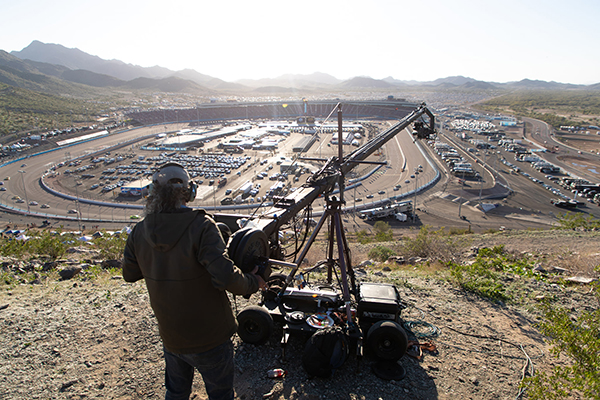
“We are a first-class facility that is, in my opinion, the most beautiful and picturesque on the circuit,” she says. “We have two NASCAR races each year, but it’s about doing more than that. We’ve got a lot of rental events that occur throughout the year. We have the NASCAR Racing Experience, so if fans want to take their turn on the racetrack, they have that ability. We do a lot of private rentals. We have some wedding receptions scheduled. We have announced an off-road expo that we’ll be running in September. We just hosted the city of Avondale’s 4th of July fireworks extravaganza. We’re really working hard to reinvent what we do.
“We don’t want to just be a racetrack. That is, first and foremost, always going to be what Phoenix Raceway is about, but when people think about the Phoenix Raceway, we want them to think about more than just a racetrack. We want them to think about a really great place to go. It’s a venue that caters to the fans, no matter what type of event you’re attending.”
When you come to Phoenix Raceway for an event, you’ll be at just one of two racetracks on the NASCAR circuit that have female presidents.
“I’m really proud of the fact that I am one of two track presidents who are female,” Giese says. “The other being Jill Gregory at Sonoma Raceway. I’m proud to be a role model and help people understand that if they work hard these types of goals are achievable. I worked really hard to have a brand that people knew. My whole philosophy was to work hard and show that I can do this and that gains respect immediately. That’s really helped me along the way.
“If you have a passion or a dream, don’t give up on it. Work with your head down and show people what you can do and continue to put your best foot forward. I truly believe that in our industry that is recognized, whether you’re male or female. People who work hard and get the job done are important.
“You also have to raise your hand. No one’s going to raise your hand for you. If you want something you need to raise your hand and you need to advocate for yourself. That’s been probably the hardest thing for me to do because I am more introverted. I’m not somebody who needs the constant accolades or anything like that. If I wanted this role, people weren’t coming to me saying, ‘Hey, do you want to be the president of Phoenix Raceway?’ I needed to raise my hand and let people know this was of interest to me and from there push through the process.”
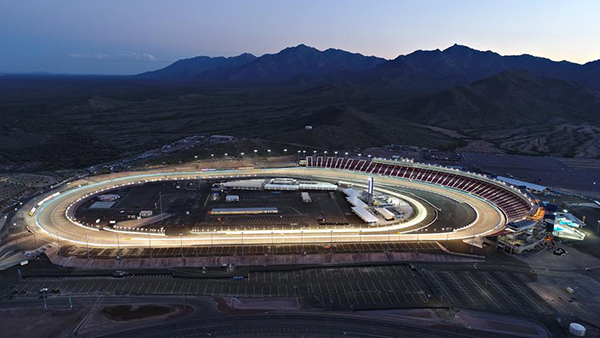
Looking ahead to what might be on the horizon for the track, for NASCAR and beyond, Julie has a lot she’s excited about.
“What excites me most is just where NASCAR is and what we’ve accomplished, especially over the last year and a half,” she says. “When you look at how our industry responded during the pandemic, being the first major sport back to racing, being the first sport to bring fans back and ratings were really good. I think what we did in the social injustice world was tremendous. You look forward and there’s just so many things that this company is doing that makes me really proud to be part of it.
“That has opened doors here in Phoenix. Conversations about Pit Bull being an owner has peaked interest with people in Phoenix. Michael Jordan coming on board. Those are things that have sparked phone calls to me from people who I haven’t met who have never been to a NASCAR race before but want to get involved and want to learn more. It’s been a fun conversation to have and it makes me proud to be part of this industry.
“If you look at the NASCAR schedule this year, I believe there’s seven new venues on the schedule. We need to continue to push ourselves to do new things and to not be afraid of doing those new things and trying things, going to markets that we haven’t been to. We have to continue to move things forward. We have a very welcoming environment at our racetracks and I think fans are going to see that more and more.”
As for Julie’s now 20-year career, there are too many highlights to count, but she pointed to a few moments that are at the top of her list.
“The first time I drove to Watkins Glen as an employee and pulled into the parking lot was very surreal and I remember thinking, ‘Wow, I am actually working in racing.’ That was a big moment for me,” Giese says. “I’m also most proud of two big events when I was at Daytona – the 60th Anniversary of the Rolex 24 and the 50th Anniversary of the Daytona 500. I had the opportunity to be part of both of those events and both were incredibly special and very momentous. Having the Thunderbirds fly over for the first time that year for the Daytona 500 in 2008 – now, you look at that relationship that’s been built between Daytona and the Thunderbirds – you can’t have one without the other. It’s fun to see a lot of the things that we worked on at Daytona continue. I feel incredibly blessed to be part of so many different, great moments over the years.”
Despite the career Julie has been able to enjoy, she still gets reminded of her hard work and where she came from every time she picks up one of the many rejection letters she received when first trying to get in the door of the racing industry.
“It’s a pretty surreal moment looking back at them and seeing how far I had come,” she says. “I’ve used them as I’ve talked to kids and students just to show them don’t give up on your dreams. If this is what you want to do, persevere and it’ll work out.”

